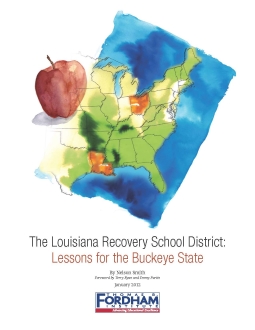Is it time for Ohio to consider new forms of governance and management for its most troubled schools and districts, and, if so, what might alternatives look like? The question of what to do with long-suffering public
schools has driven many of the country’s most significant education reforms. Both the No Child Left Behind Act and Race to the Top competition addressed failing schools and sought to force dramatic changes within them. States have also taken up the challenge. According to the Education Commission of the States there are at least 29 states that permit state takeovers of school districts for academic bankruptcy, fiscal mismanagement, and other problems, while at least 23 states provide for takeovers of school buildings.
Despite all the talk, money, and policies aimed at school turnarounds over the last decade, there are still far too many schools that seem impervious to improvement efforts.
Does it have to stay this way? Not necessarily, but it is hard to revitalize gravely ill schools without tackling the governance arrangements that led them – or at least enabled them – to fail in the first place. Across the country, there are some bold efforts underway to turn around both persistently failing schools and even failing school districts. Among the boldest and most interesting of these is Louisiana’s Recovery School District (RSD), which is accomplishing both significant gains in student achievement and consequential impacts on district-level standards and governance. Its success has already drawn the attention of policymakers in other states and similar entities are now operating in Michigan and Tennessee. The RSD has been in business long enough (since 2003) to produce some important lessons.
We at the Fordham Institute wanted to find out how the RSD concept might be applied in Ohio; so we commissioned this report. We asked Nelson Smith, former president and CEO of the National Alliance for Public Charter Schools, to lead the study because of his long experience in Louisiana, particularly in post-Katrina New Orleans, working with state education leaders, RSD leaders, and practicing
educators doing their utmost to start, re-start, or turnaround schools.
Smith shows how the RSD came about to tackle chronic dysfunction and corruption, especially within the New Orleans Public Schools where two-thirds of the state’s “academically unacceptable” schools were located. The RSD was set-up legislatively in 2003 “with extraordinary powers that could take control of individual chronically failing schools.”
Smith’s paper provides seven lessons from the RSD for Ohio, but he cautions readers that the lessons have to be taken with major differences in state contexts in mind.




